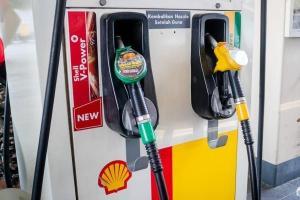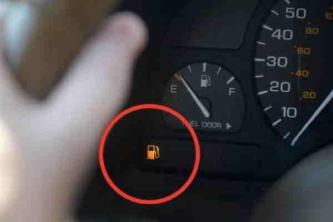fuel jettison system
fuel jettison system Related Articles

How fuel efficient is the Toyota Yaris?
Back then, UMW claims that the new engine was an effort for better fuel efficiency, and the Yaris definitely
16 – 22 May 2020 Fuel update: Price increase for all fuel types
The inevitable fuel price increase is upon us all.
13 - 19 May 2021 Fuel Price Update: Fuel prices remain!
Another week and its time for the weekly fuel price update.
Engine cooling: maintenance tips for your car’s cooling system
To keep engines cool, cars are equipped with a cooling system.
Volvo rolls out new Android-based infotainment system on more models
Volvo’s Android-based infotainment system that first made its debut on the Volvo XC40 Recharge
Pros and Cons: 2020 Proton Saga – Love the value, but fuel economy is poor
like a conventional 4-speed automatic that most drives are accustomed to.Pros – The infotainment system
5 things that will damage your steering system
Like other systems of the car, the steering system is also bound to fail.
New 2020 Volvo S90 facelift revealed; mild hybrid option, upgraded B&W sound system
new design elements in the taillamps and new bumpers.Inside, the upgraded Bowers and Wilkins audio system
Can fuel additives improve fuel economy and increase horsepower?
fuel additives?
Top 5 brand new fuel-efficient cars in Malaysia that aren’t Perodua
To most average Malaysians, one of the key factors in buying a car is good fuel economy and for a lot
With 70k users saying “Hi Proton”, meet the Malaysian team behind Proton’s GKUI system
Ever since the X70 introduced GKUI to Malaysians, the system has seen more than 70,000 registered users
Eco Idle makes the already fuel efficient Perodua Bezza even more efficient
iridium spark plugs.Pardon the technical stuff but what those mean is that the engine is able to sip fuel
Owner Review: The hybrid system failed so I decided to engine swap my car - My Honda Jazz/Fit "Hybrid" RS
I swap out the hybrid for petrol due to the hybrid system failing.
How fuel efficient is the Toyota Vios?
Toyota claimed improved fuel consumption compared to the previous powertrain, but by how much?
It’s not a speed trap camera! PDRM is testing new number plate recognition system
A video of the Royal Malaysian Police (PDRM) testing out a system that scans car license plates in real-time
15 - 21 August 2020 Fuel Price Update: Price increase for all fuel types
It was nice while it lasted, but now the inevitable has happened: both petrol and diesel fuel prices
Owner Review: Brilliant handling and fuel efficient - My 2019 Mazda CX-3
Peace of mind, free maintenance, brilliant handling, good build quality, fuel efficient, reliability,
Deal Breaker: We love the Honda Jazz but we just can't live with the infotainment system!
It is practical, spacious, fuel efficient and its steering is nicely weighted for city dwellers to easily
How to properly use Anti-lock Braking System (ABS)
That evasive action wouldnt have been possible if your car wasnt equipped with Anti-lock Braking System
Owner Review: Advanced safety system and low maintenance cost - My 2021 Perodua Ativa 1.0T H
Fuel efficient Low maintenance cost Nice red colourUser experienceI have already done 450 km.
fuel jettison system Post Review
@Stixx_jm @MasterKGsa @TurkishAirlines Not all aircraft have fuel jettison system especially those who comply with FAR Part 25.119 and 25.121(d). https://t.co/eTh0qZR2Bi
A330-223 ni doesnt have fuel jettison system. Takde nozzle dekat fairing attaching flaps. Tu electrostatic discharges http://t.co/8J04WplNfS
You can only jettison fuel (in a flying helicopter) from external auxiliary tanks called CEFS CRASHWORTHY EXTERNAL FUEL SYSTEM ( see first image above too ) https://t.co/smfNKlxe8P
Fact - Fuel jettison systems are used very infrequently. Here’s a video I captured of a 787 fuel jettison system in operation. Fuel evaporates very quickly st altitude. Kind of hypnotic to watch. https://t.co/MHA89TYPxa
During the Privat Air 767 Test Flight, we checked the Fuel Jettison System - rare sight. http://t.co/aWzIVeOu
The business end of the 767 fuel jettison system. One nozzle on each wing. Used to reduce aircraft weight in event of emergency landing. https://t.co/hTmKK6Xfh6
"The version operated by BAS has a variety of technical modifications including *long range fuel tanks* with a jettison system." The De Havilland Dash 7. A part of the BAS armoury. https://t.co/MFyue4AQqS
Fuel jettison system reduce aircraft's weight in emergency situations. https://t.co/gRDjf1AMxX
A test of the fuel jettison system was conducted on N787BA at 1:30 AM June 15, http://tinyurl.com/lxz6qb
#VASQuiz 🤔An aircraft is equipped with a fuel jettison system. How quickly must this system be able to reduce weight from MTOW (Maximum Takeoff Weight) to MLW (Maximum Landing Weight) in order to perform a safe landing within aircraft limits?🛬
fuel jettison system Q&A Review
How does the fuel jettison system work in an aircraft?
It’s very technical. You take a big pipe, attach one end to the fuel tank, and the other end to a point on the trailing edge of the wing, well clear of the engine. Then mount a big valve on this big pipe, along with a powerful electric pump. The pump and valve are controlled by a small switch on the flight deck. And that’s about it.
How do aircraft dump fuel before landing?
Aircraft very rarely dump fuel, in 40 years of flying airliners I did not do that even once. But if it is needed, and the aircraft has the capability, then there will be a panel to control it. On the Boeing 787s I flew the system allowed you to select how much fuel would remain when the dumping finished. Here is the fuel jettison panel It's located in the center of the panel here
I was once told that planes cannot land with fuel (it has to land with just enough fuel for the landing). Is this true? And if so, why?
Airplanes land with enough fuel… and more. The minimum fuel required for a flight is: Route fuel. Route reserve (3 or 5% of the route fuel). Fuel for a go around and missed approach at destination. Diversion to an alternate airport. 30 or 45 minutes holding at the alternate airport, at 1500 ft. Any extra fuel that the pilot in command deems necessary. But you cannot just “fill it up”. There are two points to consider: 1.- Efficiency Carrying too much fuel increases weight. This causes unnecessary fuel burn, as well as tire and brake wear. 2.- Maximum Landing Weight The maximum structural landing weight (MLW) on an aircraft is less than the maximum takeoff weight (MTOW). Dispatchers consider this during the flight planning stage. In case of an immediate return when the actual TOW is higher than the MLW, there are two options: Dump fuel via the fuel jettison system until MLW is reached. Perform an overweight landing by following a special procedure designed for this. An inspection is required afterwards.
When a plane releases its excess fuel overhead, where does it go?
Generally this fuel releasing process is called ,fuel dumping, or ,jettison. ,Fuel dumping is usually restricted by altitude and most modern planes use systems to vaporize the fuel stream as much as possible to help evaporation. ATC controllers also try to avoid populated areas when directing fuel dumping planes. Within these parameters, the fuel turns to gas away and ends up in the atmosphere and on the clouds. I would guess it eventually mixes with the rain, in low enough concentrations that it's barely noticeable. Though it reaches to earth's atmosphere, ,it's like a drop from an ocean when compared to other threats creating pollution to the environment and also it could be yes depending on amount of fuel jettisoned.
How do airliners dump fuel?
Fuel jettison valve provided at the edge of wing on rear side. Fuel lines are pressurized by fuel pump and fuel jettison valve also provided on same line. This provision available in bigger aircrafts. When emergency conditions appears immediately after takeoff or during take off then landing required to carried out. But bigger aircrafts carries 50 to 400 tonnes of fuel which increased max takeoff weight. But max landing weight still in lower side. So when landing required immediately after takeoff then fuel jettison carried out to reduce landing weight. Fuel jettison system basics in above figure.
Will a plane pull up the flaps, drop down the gear and extend the spoilers if they need to burn fuel?
This could be an operation procedure for aircrafts which do not have jettison system like Boeing 737 series. The general idea of this technic is that reduce fuel as soon as possible to reduce weight under ,Maximum Landing Weight ,under non-normal situations.
If jet fuel is so expensive, then why do pilots drop fuel in midair, does it cause harm to environment?
Flight planning will see how much fuel a plane needs to fly its planned trip, plus 45 minutes reserve and possibly any additional holding fuel required. Planning software these days used by airlines will take into account wind forecasts and currently reported conditions. Fuel is usually accurate to within a tenth of a ton or better. When the aircraft arrives at its destination, it should have pretty close to the amount of fuel that was planned. Some flights can be 12, 14, 16+ hours long. For an aircraft to fly that far, it needs lots and lots of fuel. Over 100 ton is common on a 747 or A380. That fuel burns away as the aircraft flies, so by the time it lands, there might be 10 ton left. The aircraft lands 90 ton lighter than when it departed. Aircraft that are heavier tend to need more speed to fly. The heavier the aircraft is, the faster the approach speed will be, and the longer it will take to slow down. Runways are usually only around 3km (10000ft) or so in length, so the aircraft has to be light enough to come to a stop in that length. Landings that are at a heavier weight are likely to damage components on touchdown. So planes will be fuel controlled to ensure they land at their destination with enough fuel to handle delays, bad weather, and a diversion to somewhere with better weather. But not much more than that. At worst case, the aircraft should land with about 30 minutes left before it runs out of fuel, even after it had to abandon an approach to the original destination and then fly away to somewhere else. This is great when the plane is working fine and flies for the duration of its flight. But what happens when an engine explodes during takeoff, puncturing the cabin causing decompression and lacerating some passengers with splintering glass and metal shards, so they need to be hospitalized ASAP! Well you could fly around at low level for 14 hours and then deliver the injured passengers’ dead lifeless bodies to the morgue. Or you could try to land a plane well above the maximum landing weight, which means the plane's landing gear might collapse through the wing attach points, have its brakes catch fire, or roll off the end of the runway unable to stop in time. Sometimes the plane has to get on the ground, anywhere, as soon as possible. Usually because someone will die if they don't. Maybe someone had a heart attack on the plane. Maybe the plane is on fire, or the navigation systems broke, or something. So for aircraft which fly these ultra-long flights, fuel dumping systems have been installed so the aircraft can return to land where it just departed from without turning into a flaming fireball wreckage of death... or waiting 10 hours in the sky for the fuel to be used by the engines. Smaller aircraft, like the A320, 737, MD80, E190, Su100, CRJ900, A220, and similar sized narrow body aircraft that are limited to 7 or 8 hours of flight time generally do not have fuel dump systems, because they simply don't carry as much fuel as the long haul aircraft. It's possible to land "A little over weight" in a 737 and probably remain on most runways after coming to a stop. Some hot brakes, a requirement to do an inspection of the landing gear and maybe replacing some bent components. But nothing disastrous. But if your plane carries 100 tons of fuel, then if you need to land ASAP, it's best not to throw yourself at the ground weighing 500 tons and hope you don't explode when the plane runs out of runway and falls off the end into a ditch. Later addition: Here is the fuel dump switches on a 747–400 on the overhead panel above the pilots’ heads. First the big 5 position switch needs to be selected from “off” to one of the 4 dump modes. Auto dump to max landing weight. Auto dump to selected weight. Manual dump from centre tanks only, and Manual Dump. If the “Dump to selected weight” is selected, then the “Dump to” knob needs to be rotated. This selects a number on the fuel panel screen showing at what weight of fuel the fuel dump system will automatically switch off. Then the 2 switch guards need to be opened (red covers) and finally the 2 buttons pressed to begin the dump. When jettisoning fuel, the Multi Function EICAS display will show the fuel system schematic. Note “Total Fuel” (163.0) shown up the top (in thousands of Kilograms in this version, can also display thousands of pounds). Also note “Jettison time” - in this case 45 minutes. It will take 45 minutes to dump from 163.0 tonnes of fuel down to the selected number. The fuel vents are positioned between the flaps and outer aileron Because this is a ,very rare ,procedure that only happens during Emergencies, there are very few videos of it happening on Youtube. However - by chance entirely, ,One Cockpit - Two Pilots - Six Cameras | Welcome to - PilotsEYE.tv, , a filming group that does multi-camera cockpit videos were filming what was intended to be a Normal flight in a Swissair Airbus A340, when one engine had a problem in flight and had to be shut down. The crew then troubleshot the issue, finally deciding after several minutes that a return to Zurich would be the best option, so did a fuel dump to get below landing weight. You can see the fuel dump in action below. Many of the most common airliners do not have a fuel jettison system. The News Media hasn’t figured this out yet and continue to either say that planes that don’t have the capability to dump fuel, did dump fuel, or call out pilots for not dumping fuel in their planes that have no fuel dump system, and overruning the runway due to landing too far down the runway in rain.
What are planes dumping out in the sky every day?
Some of the mid-size general aviation airplanes have a ‘relieve hose’ under the pilot seats. This goes straight out of the belly of the airplane. And there is the fuel jettison system on many long-haul passenger jets to dump fuel for an emergency landing if the gross weight of the airplane is too high for landing. I think that’s all for civil aviation.
How long can a heavily fueled (large) aircraft (Eg. A380 bound for a 12 hour flight) fly before making an emergency landing?
Airbus A380-800, Range at design load: 15,700 km Fuel Capacity: 323,546 liters Flying 1 km will use 20.6 liters fuel. Maximum take-off weight,: 575,000 kg Maximum landing weight: 394,000 kg Now we need consume (,Maximum take-off weight, - Maximum landing weight =) 181,000 liters fuel for emergency landing. So the aircraft need fly (181000 /20.6 =) 8786 km. Cruise speed: Mach 0.85 (about 900 km/h) So the aircraft A380-800 (full fuel, maximum payload) need fly 9.76 hours before making an emergency landing. But A380-800 has jettison system. The jettison system is used in flight to dump fuel overboard, to decrease the A/C gross weight before landing. So the aircraft A380-800 need fly a little time before making an emergency landing.
Why can’t an airplane drain their fuel if a crash is imminent?
The airplanes are certified for a maximum takeoff weight, this common fact is almost now by everyone. There is one more lesser known fact that airplanes are certified for maximum landing weight as well. If the weight is aircraft at the time of landing is more than it is supposed to it will result in heavy landing and which is dangerous. To cater for the situation of heavy landings large commercial jetliners are equipped with fuel jettisoning system. If a pilot due to any reason has to land immediately after take off he jettisons the fuel. In the unfortunate event when the crash is imminent, to put the fuel on jettison mode will not be the right descision as it may end up as crashing aircraft and spilling jet fuel all round.
 HOME
HOME 


